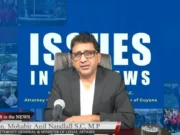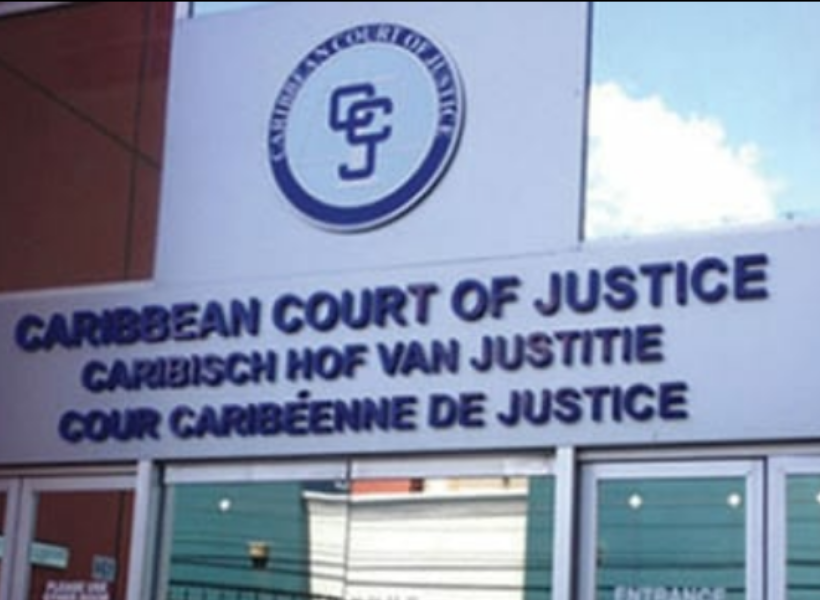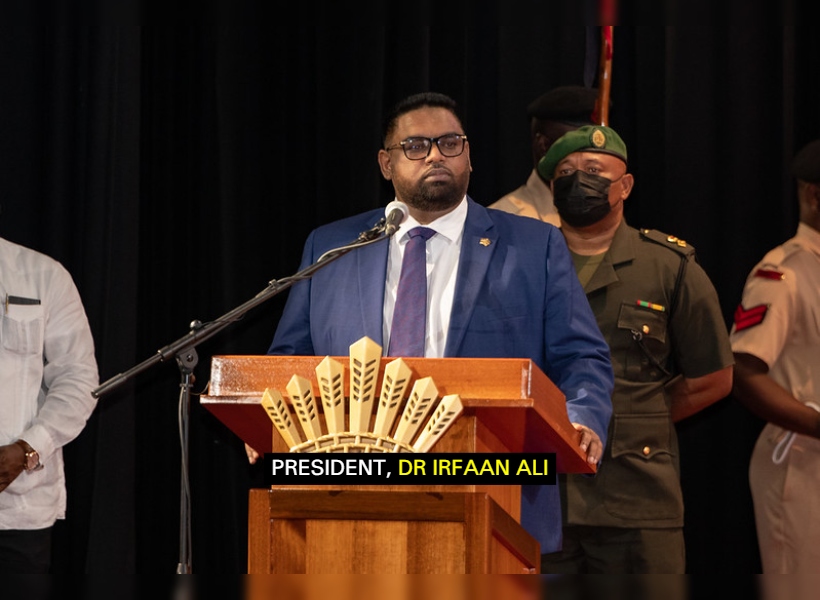President, Irfaan Ali launched today, his government’s expanded Low Carbon Development Strategy (LCDS) which provides a pellucid, three-pronged plan for sustainable energy transition by 2030.
Ali was keen to note that LCDS 2030 advances a vision that was first articulated in 2008 by former President, Dr. Bharrat Jagdeo and further developed in 2009. The Head of State said the scale of the vision captured 12 years ago remains valid today – and continues to rest on two fundamental questions. He said these are: How can Guyana harness the opportunities of low carbon development to prosper at home? And how can Guyana lead the way to globally relevant solutions to the biggest challenges of our time, including energy security and climate change?
The President then explained that the LCDS 2030 outlines how this will be addressed in three phases.
From 2022-2027, Ali said a near tripling of electricity demand will be met through a combination of natural gas and the Amaila Falls Hydropower project on the main national grid, coupled with a major expansion of solar power with batteries on the rural networks. By the end of this period, he said the Essequibo Coast, Linden, Leguan, and Wakenaam grids will be integrated with the national grid.
The Head of State disclosed that the Bartica, Lethem, Port Kaituma, Mahdia, and Matthews Ridge grids will be almost exclusively powered by renewable energy. Alongside the work on the country’s grids, he said all hinterland villages, about 200 villages with a total population of just under 100,000 people – will undergo an electrification programme by about 2026. He said this work has begun already in villages across the country, included Seba, Waramadong, Paruima, Kurukabaru, Whyaka, Mission Capoey, Lake Top Capoey, Annai, St Monica, and Karaburi. Finally, Ali said the transmission and distribution network will undergo a massive upgrade to manage the forecasted electricity demand and meet the standards expected of a modern power utility company.
From 2027 to 2032, the Head of State said a second phase will see further increases in electricity demand being met by continued replacement of Heavy Fuel Oil, expansion of wind and solar power, and the commission of Guyana’s second hydro plant, the site of which will be identified in the coming years.
After 2032, he said the expansion will be driven by the prevailing market conditions, but it is likely that battery technology will be sufficiently advanced to enable solar and wind plants to provide new capacity increases while contributing to further downward pressure on electricity prices.
Further details are set out in the LCDS 2030, but in sum, the President said this energy transition will achieve a level that very few, if any, countries have achieved.
To carry out the national consultation, the President said the Multi-Stakeholder Steering Committee will be reconstituted. He said the details will be shared in the weeks ahead while adding that there will be ample opportunity for all to participate.
“…I say to you fellow Guyanese, this is our moment. We urge you to read the document, to take your time in analyzing and understanding the document, to understand the context in which Guyana is operating, to understand the positioning of our country in the international dynamics, to understand the positioning of our country in transitioning from our natural resources now, which we must utilise, to a strong sustainable global economy,” the President concluded.
The LCDS 2030 can be accessed using this website: https://lcds.gov.gy/.











